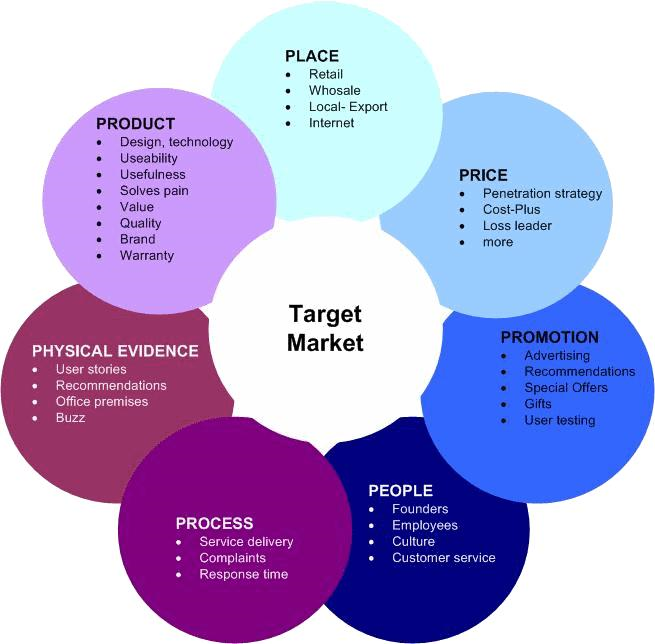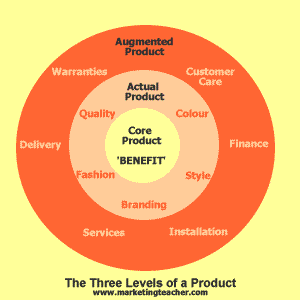Introduction
Sustainability is a very important part of contemporary business practices because it enables businesses full fill the needs of the present population without threatening the ability of future generations to meet their own needs. Sustainability makes it possible for businesses to focus completely on the various components of the business operation with the intent of ensuring future success of the business (Charles et al 2009, 54-57). Oishi Gourmet Restaurant is a new business idea that has its foundations rooted on principle of sustainable business.
Sustainable business practices are becoming more common and popular worldwide therefore attracting members of the business community because they guarantee long-term commercial success (Ansoff 2000, 44). The holistic approach of sustainable business practices allows managers to concentrate on the three most important elements of business known as the Triple Bottom Line (TBL). The triple bottom line allows businesses such as Oishi Gourmet Restaurant to dwell on not only profitability but also on people/community and also on the planet/environment. Oishi business ambitions cannot be separated from the society and the environment and it is hence only appropriate to incorporate these facets of sustainable business practices into organizational strategy (Wheelen & Hunger 2002, 278-290).
The business environment under which Oishi exists is quite defines its business strategy a lot political-legal aspects of the environment require the Restaurant to obtain all necessary licenses. When it comes to acquisition of licenses locally it is quite simple but if the restaurant decides to go global it may force to cope with varying political-legal environment. It is in the same way that the demographic environment offers challenges to their business model consumers are dynamic and hence Changes in attributes such as lifestyles and attitudes of the customers may have a huge effect on the performance of the restaurant and hence from time to time affect the way business is carried out (Usunier 1996, 42-47). New technology in the hospitality industry is emerging daily and therefore the restaurant is also required to adapt to this changes.
The marketing plan usually lays emphasis on several strategies that an organization intends to formulate, implement and monitor closely in order to ensure that investments which are put in a business multiply and the investors are able to enjoy good returns(Wheelen & Hunger 2002, 106). Oishi Gourmet Restaurant is one such business establishment that is expected not only to conduct its business on a sustainable business format but also cater to the needs of the consumers and at the same time generate enough profits to keep investors happy. The main reason for the existence of the restaurant is to cater to the bellies of their customers by preparing for them the highest form of prepared delicacies, made from exotic recipes. Moreover, restaurant intends to fuse some of the finest culinary influences from all over the world with the intent of offering exciting, unexpected aspects of different cultures, while doing these the business hopes to positioning their core business strategy using sustainable business practices, and therefore the restaurant needs to develop a good marketing plan to guide its business prospects as it enters the market (Camillus 2002, 25).
Mission and Objectives
Company Mission
The mission of Oishi Gourmet is that every man should have the right to access the most exquisite ethnic delicacies as he/she wishes. Human beings deserve to take part in the things that make this planet a wonderful world. From the above mission it is very clear that the management of Oishi gourmet takes the business of preparing good food very seriously and that the company insists on using sustainable business policies o ensure that the highest quality of food is delivered to those who need it.
Objectives
- To survive in the dynamic business environment in the long-run
- To grow sales and revenues and minimize costs in order to enjoy high profits
- To pursue a sustainable business model that is not only ethical but environment friendly.
Target Marketing
Segmentation
Segmentation is a process by which an organization partitions a market in order to deliver products that are particularly meant to cater for the needs that are distinctively meant for that portion of the market (Campbell et al 2002, 144). The clients of Oishi restaurant are divided among high end and low end customers who are either individuals or corporate clients. The corporate clients can offer more solid revenues streams due to the large volume of individuals who attend corporate functions. Such customers include corporations, event organizers who may hire our outdoor catering services at their own pleasure. Corporate clients usually prefer to pay more for restaurant services thus making them a good market for the restaurant (Ford 1990, 325-327). On the other hand, individual clients are clients who visit the strategically-placed branches and order for their food. Individual clients in this case are divided into high end who desire to have the finest and most differentiated exotic food and may often even demand to have private rooms or enclosed spaces made available to them. Low end customers on the other end are low income earners who have a particular appreciation of foreign delicacies and therefore prefer foreign recipes their product demand is of high quality but not necessarily highly differentiatedservices (Waterschoot & Van den Bulte 1992, 83).
Positioning
Price and quality are critical factors that will be concentrated on when the company reaches out to its clients. But the overall expectation of Oishi restaurant is to place itself within the market as an organization which has come to offer value and satisfaction to consumers by delivering to them products which are of high quality (Charles et al 2009, 214).

Marketing Tactics (7p’s)
Price
Pricing communicates a lot about a product. A company prices its product in accordance with its profit objectives, competitors, cost structures all dependent on the demand and supply structure of the industry. Porter theory suggests that a company can either choose to serve a broader spectrum of the market or choose to either adopt a low cost model or a product differentiation model. Porter theory goes ahead to state that companies who choose to differentiate their products and come up with slightly different products are most likely to have high capital costs and therefore higher expenses to be spent in manufacturing, marketing, research and development and product packaging. A penetration price policy will implemented initially order for Oishi Gourmet Restaurant in order to gain ground fast in the market. Penetration pricing techniques allow organization to increase consumer traffic and make their presence known in the market once they roll out their business activities. Moreover, penetration pricing enables newcomers to undercut the price offered by competitors for similar products, but ensuring the same quality, if not better. Since the current situation in the market has indicated that a lot of consumers do require exotic foods then this move is likely to benefit the organization. But as time goes by Oishi Gourmet restaurant intends to hike its prices hoping that their obtained customer base will have developed some loyalty to their exquisite and high quality product offering forcing them to stay and appreciate their exotic meals.
Product
The restaurant is expected to cook high quality dishes that target a niche market of individuals who prefer to eat the finest foreign meals. Oishi Gourmet Restaurant intends to have its product offering targeting both the low and high income market segments. Over time low income individuals have shied away from exotic food restaurants but Oishi Gourmet Restaurant wishes to change this. The product offerings will consist of meals gathered from famous recipes that come from various parts of the world especially Japan, China and Asian countries. Using these famous recipes the products on the menu will be further fused with local recipes to make the food more acceptable when the restaurant operates in foreign countries. The Restaurant intense to have a wide and exhaustive menu ranging from much affordable foreign cuisines to highly differentiated high class meals which can be served in private enclosed rooms within.The products that are to be sold by Oishi Gourmet consist of exotic recipes mainly from Asia. The meals will be prepared by world-class chefs who are well aware of the latest cooking and food preparation techniques. In marketing there are rarely no pure goods or services and restaurant services are merely a hybrid that has both the characteristics of both goods and services (Usunier 1996, 83). The core product in this case is the food which satisfies and individuals hunger or thirst, the core product is the food itself in terms of taste, color, flavor, presentation while the augmented product may include the services of waiters and waitresses, the ambience of the room together with customer care services.

Promotion
Promotions is an integral part of business and often promotion can be costly. Oishi Gourmet restaurant management intends to use less costly techniques to create brand awareness within the market. Although mass media techniques such as the use of billboards and television can be quite expensive, the company will ensure that it has a web and social media presence that is enough to encourage more consumers to purchase their goods and services. Additionally, the restaurant intends to use the classified section of various newspapers to market its brand by renting a small place which will be strategically pace to capture the readers of the newspapers.
Place
Distribution of products and services has always posed a challenge for commercial organizations. Instead of establishments such as restaurants becoming laid back and waiting for customers to step into their premises other options such as online purchasing can be adopted so that customers who love the food of Oishi Gourmet can always place their orders online and have them delivered to their doorsteps. Moreover, when it comes to catering for corporate customers who are taking large orders at a time can have their orders cooked on site so that the quality of the food is not compromised in terms of qualityservices (Waterschoot & Van den Bulte, 1992, 84).
People
A well trained sales force, cooks and waiters/waitresses will go a long way towards providing a superior service offering for the organizations clients. The basic training of the hotel staff involves changing the culture of employees and urging them to be more customer centered individuals who are polite and ever smiling. Moreover the hotel will ensure that their employees are dressed in the most suitable professional attire because this will please their clients and improve the process of service delivery. Employees are the direct representatives of any organization and therefore consumers are likely to transfer their experiences with employees and associate them with the company itself (Camillus, 2002, 123). Therefore, if employees are disorganized or rude then customers will conclude that Oishi Restaurant is not a good restaurant and this is not good for the brand image.
Physical environment
Oishi Gourmet Restaurant intends to hire a marketing firm and interior designers to design a cool ambience for their hotel premises. The physical environment forms part of a customers perceptions about a business and therefore knowing this the management has decided to divide their premises into 3 four parts one which will represent Chinese culture, the second one Japanese culture, the third part Arab culture and the last part westernized culture. These parts will be filled with the appropriate colors, paintings that are symbolic to the various recipes which are being served.
Process
Delivery of services to consumers will be conducted in a professional and friendly manner in order to maximize the customer experience. In a way that communicates the integrity and high quality standards of Primo Motors. The management has made it clear that hygiene will be a key concern and that all orders within restaurant are to be delivered to the respective tables within 10 minutes. Depending on nature of orders more personnel will be shifted from area to area in order to balance demand and supply patterns. Moreover the restaurant will strive to deliver online orders which are within a 10km radius within 15 minutes using motor cycle couriers who are part of the company
Marketing implementation
The entire marketing program is to be monitored vigorously during the first year but the full results are expected to be realised after three years, during this period of implementation Oishi Gourmet Restaurant should put in place an implementation committee that can be used to monitor closely the implementation process with the aim of putting the entire process on track (Wheelen & Hunger 2002, 315). The implementation process usually requires a company to supply enough resources in order to ensure that strategy implementation is successful. The top management should understand that it takes time to build an empire and that implementation of strategy is often met with resistance and a lot of challenges and consequently the first step of the implementation stage is to encourage organizational personnel to embrace change by sensitizing them on the need of the change and giving them positive attributes that are to arise put of the change this is because human resource are the most important resource of the organization and thus when they are ready to embrace the change, then the chance of success are more (Wheelen & Hunger, 2002, 116-118).
The marketing department will constantly be required to evaluate its performance levels as implementation takes place, analysis being made in comparison with forecasted revenues and achievement of set forth objectives will even make implementation more successful. The use of key performance indicators will hence be essential to measure performance of the Oishi Gourmet Restaurant. Financial Key performance indicators and marketing key performance indicators include sales, revenues, costs, market share data and customer loyalty. The use of milestones will be of most importance to ensure that Oishi Gourmet’s restaurants objectives are on the right path. Short term goals and targets will be used against a planned timetable and used to control the strategic implementation process (Frey 2008, 22).
Evaluation and control
A balanced score card approach is often used by managers and strategists to evaluate, monitor and justify any corrections in strategy within organizations (Wheelen & Hunger 2002, 303). The advantage of a balanced scorecard approach is that it will enable Oishi Gourmet Restaurant use both a financial and non financial approach to measure strategic success of an organization, by comparing input of various process and output. BSC is a highly effective strategic performance management tool that enables managers take a critical look on how appropriate the marketing strategies that will be put in place by Oishi Gourmet Restaurant management is to achieving their goals and correct any deviations from the intended strategic path. The BSC approach will allow managers to review strategy by taking an in-depth look at how the organization performed especially when it comes to financial parameters, customer parameters; Internal business processes and correct any non desired outcomes within the organization (Worthington & Britton 2009, 79-82). If the brand value of this brand goes up then there will be financial consequences, customer consequences and other consequences and this can be used as the key indicators that can be used to evaluate if the strategy that was put in place was effective and good enough to help the company realize its goals (Wheelen & Hunger 2002, 328). This is the approach that will be used by management of Oishi Gourmet restaurant control and evaluate how the organizations strategic performance.
Financial forecast
Financial statement
Assumptions
- The business will experience a steady learning curve for the first 3 years.
- Only 40% of all costs are fixed costs while the rest are variable costs.
- The business will realize significant growth in revenues is subsequent years.
- Amount estimates are in American Dollars ($).
Table 1: List of total expenses (2011-2013)
The expenses are expected to be rise gradually in the first three years due to inflation and also expansion of the business. Assuming that the business will make sales of 100,000 in the first year and gradually increase its revenues by 50 percent annually then the sales will be $100,000, $ 150,000 and $ 225,000 respectively.

Conclusion
The current commercial environment is very competitive and dynamic and hence if Oishi Gourmet is to become a successful organization in this industry it must plan its marketing function properly. In the absence of good planning companies often end up failing. Many businesses end up making losses not because their business ideas and product offering is poor but because managers do not take seriously the process of business planning and strategy formulation. Entrepreneurs/business-men/managers should understand that sustainable business ideas must be backed up by good plans that will cover all functional areas in order for business managers to make the best business ideas. Marketing strategies and plans are required to be precise in both the short-term and long-run if Oishi Gourmet intends to achieve all its corporate objectives.
References
Ansoff, H., 2000. Corporate Strategy: An Analytical Approach to Business Policy for Growth and Expansion. New York: McGraw-Hill.
Camillus, J., 2002. Strategic planning and management control: systems for survival and Success. Lexington, KY: Lexington Books.
Campbell et al., 2002. Business Strategy an Introduction, 2 edn. Linacre House, Banbury Rd: Butterworth-Heinemann.
Charles, L. et al., 2009. Essentials of Marketing. Natorp Boulevard: Cengage Learning.
Ford, D., 1990. “Understanding Business Markets: Interaction, Relationships and Processes.” Industrial Marketing Management, Vol. 5, pp. 319-32.
Frey, R. S., 2008. Successful strategies for Small Businesses: using product knowledge, 5 edn, Artech House Inc: Norwood.
Usunier, J. C., 1996. Marketing Across Cultures, 2nd ed. Englewood Cliffs, NJ: Prentice-Hall International.
Waterschoot, W. and Van den Bulte, C., 1992. “The 4P classification of the marketing mix revisited.” Journal of Marketing, Vol. 56, pp. 83-93.
Wheelen, T. & Hunger, D. J., 2002. Strategic management and business policy. New Jersey: Prentice hall.
Worthington, I. & Britton, S., 2009. Business environment, 6th edition. Melbourne: Pearson Education.